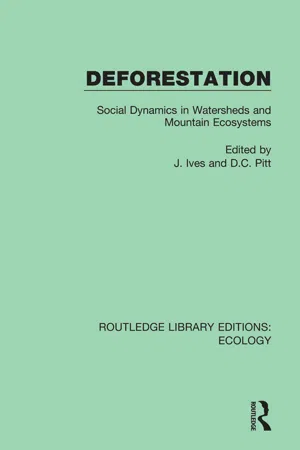Gorkha Earthquake
The Gorkha Earthquake, also known as the Nepal earthquake, occurred on April 25, 2015, with a magnitude of 7.8. It caused widespread devastation in Nepal, resulting in thousands of deaths and significant damage to infrastructure. The earthquake also triggered avalanches on Mount Everest and affected neighboring countries, making it one of the deadliest natural disasters in the region.
3 Key excerpts on "Gorkha Earthquake"
- eBook - ePub
- (Author)
- 2016(Publication Date)
- Lonely Planet(Publisher)
...Aftershocks followed for weeks, including a major tremor on 12 May which killed hundreds more. Around the epicenter in Gorkha district, and across the Kathmandu Valley, communities were devastated and centuries-old monuments were reduced to rubble. Many of Nepal's most famous tourist sights were damaged beyond recognition. The earthquake has been described as the worst disaster to hit Nepal since the deadly Bihar-Nepal earthquake of 1934. A huge international response has helped Nepal to cope with the immediate aftermath of the crisis but rebuilding lost homes, monuments and livelihoods is likely to be a slow and drawn out process. Tourism has been severely affected by the disaster, and this comes at a time when Nepal is desperately in need of the revenue from tourism to rebuild...
- eBook - ePub
Tourism and Nationalism in Nepal
A Developing Country Perspective
- Kalyan Bhandari(Author)
- 2018(Publication Date)
- Routledge(Publisher)
...5 Earthquake and diasporic travel to homeland Introduction On the 25th of April 2015, Nepal was struck by an earthquake of a magnitude of 7.8 that killed more than 8,800 people and injured another 23,000. It displaced hundreds of thousands of people and made them homeless, and many villages were flattened in the affected regions (National Planning Commission, 2015). The earthquake was a huge blow to the country that was recovering from a decade-long civil war and political turmoil. Tourism was the worst-hit sector, as the earthquake occurred during the first of the two major tourism seasons of the year. According to the Post Disaster Needs Assessment report prepared by the Government of Nepal, nine out of ten planned foreign arrivals cancelled in the aftermath of the quake. Seven out of 10 World Heritage sites in the Kathmandu Valley were directly affected, including some popular trekking routes. In terms of heritage, the earthquake affected about 2,900 structures with a cultural, historical, and religious heritage value. Major monuments in Kathmandu’s World Heritage Monument Zones were severely damaged, and many were completely destroyed. In addition, in more than 20 districts, thousands of private residences built on traditional lines, historic public buildings and ancient and recently built temples and monasteries were destroyed by the disaster. The Post Disaster Needs Assessment prepared by the Government of Nepal suggested the total estimated damage to tangible heritage was around US$ 169 million. The aftermath of the earthquake witnessed a remarkable engagement of the Nepali diasporic community throughout the world in the relief and rebuilding process. To the diasporic communities, the earthquake provided a setting for the expression of feelings and love for their home country. As a result, a considerable number of Nepalis from all around the world visited ‘home’...
- eBook - ePub
Deforestation
Social Dynamics in Watersheds and Mountain Ecosystems
- J. Ives, D.C. Pitt, J. Ives, D.C. Pitt(Authors)
- 2019(Publication Date)
- Routledge(Publisher)
...Abh., H.20, 1957 Sharma, C.K. (1976), Landslides and Soil Erosion in Nepal, Mrs Sangeeta Sharma (publisher), 23/281 Bishalnagar, Kathmandu, Nepal Shiva, V., Sharatchandra, H.C. and Bandyopadhyay, J. (1981), Social, economic and ecological impact of social forestry in Kolar. Indian Institute of Management, Bangalore, India (mimeo) Starkel, L. (1972), The role of catastrophic rainfall in the shaping of the relief of the Lower Himalaya (Darjeeling Hills). Geographia Polonica, 21 Sterling, C. (1976), Nepal. Atlantic Monthly (Oct.), 238(4): 14–25, New York Thompson, M. and Warburton, M. (1985a), Uncertainty on a Himalayan scale, Mountain Research and Development, 5(2), 115–35 ------, (1985b), Knowing where to hit it: a conceptual framework for the sustainable development of the Himalaya, Mountain Research and Development, 5(3), 203–20 Tucker, R. (1986), The evolution of transhumant grazing in the Punjab Himalaya, Mountain Research and Development, 6(1) 17–28 Vuichard, D. (1986), Geological and petrographical investigations for the Mountain Hazards Mapping Project, Khumbu Himal, Nepal, Mountain Research and Development 6(1) 41–51 Vuichard, D. and Zimmermann, M. (1986), The Langmoch flash-flood, Khumbu Himal, Nepal. Mountain Research and Development 6(1): 90–4 Zimmermann, M., Bichsel, M. and Kienholz, H. (1986), Mountain Hazards Mapping in the Khumbu Himal, Nepal, with prototype map, scale 1:50,000. Mountain Research and Development, 6(1) 29–40...


